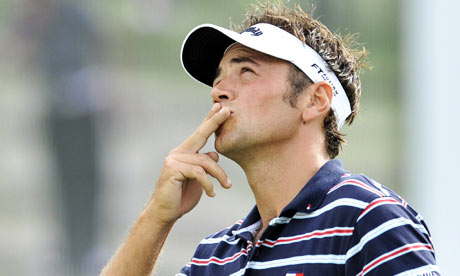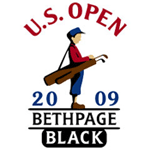...assuming you like tales of big egos, big money and big power plays.
The PGA Tour Policy Board votes Tuesday whether to adopt the 2010 condition of competition requiring the use of new grooves. As Alex Miceli reported Friday, three of four player votes are likely going to say no to adopting the condition for January play.
That means in order to uphold the PGA Tour's original stance in support of the USGA/R&A groove spec change, the five non-player policy board reps would have to overrule the player directors. Most insiders believe this has never occurred in the history of the policy board.
Because it's Congressional week and I try not to contemplate the idea of watching golf played there, let's consider the possible votes and ensuing fallout should the policy board postpone the implementation until 2011:
- Postponement would be a hit to Tim Finchem's perceived power or at least, the assumption that he has control of the policy board. Finchem has made several public statements in support of the groove change. Having to spin a reversal at this late date will test Ponte Vedra's For Immediate Release wordsmiths.
- A blow to the USGA/R&A. For obvious reasons. They'll have to retreat from their 2010 implementation at the U.S. Open and can expect to face a full assault, and perhaps even legal action. Bomb and Gouge summed it up better than I in this post.
- Postponement would be a major victory for Titleist and Wally Uihlein. Several players have told me that master wedge designer Bob Vokey has not yet come up with a replacement groove configuration to his and Titleist's liking. Couple that ongoing research with Acushnet not feeling it will have enough time to properly develop a ball they believe is to their standards and soft enough to satisfy players who would be shifting to less-helpful grooves come January, and you begin to understand why this has become an issue (and why there was Ian Poulter's recent Twitter whining).
- Postponement could be a major blow to the image of PGA Tour pros depending on how it's spun. Shoot, some have already likened this to golf's version of steroids. If the players need more time to prepare for the changeover, I think they'll be shocked at the apathy and even hostility they face from serious golf fans. Media types have been asking since last fall what players were doing to prepare and most had not given the subject any thought. Curiously, the Nike guys seem very prepared and many of the more thoughtful players have done their homework. (Cink here, Woods here, Immelman/Mickelson/Furyk here, Ogilvy here.)
- Tough questions would be raised about the policy board's motives. The three players leaning toward a no vote all play the Titleist ball. Ironically, all three stand to benefit from the rule change based on the USGA's theory of forcing a softer ball into the hands of players. David Toms, Brad Faxon and Zach Johnson aren't the longest hitters in the world but all are respected for shotmaking and short game prowess. They will be expected to make convincing arguments about the strength of the USGA's research and implementation if they hope to deflect inevitable criticism. Doable, but also a lot of headache and annoyance they don't need.
- A huge setback for the new groove configuration. Many behind-the-scenes types roll their eyes at this latest chapter in the grooves saga because they insist that the policy board would only be postponing the inevitable. I don't agree. This is bifurcation and I've never understood how the manufacturers would allow this precedent to be set without a fight. We discussed this several times (including here, here). If the board postpones, I predict that over the next year we will see the USGA's research scrutinized, attacked and we'll witness an all-out PR assault on the decision. You'll hear questions--some very legitimate--about just how many players were interviewed, how many were involved in testing, how wet newspaper shreddings simulate rough, how bifurcation is good for the sport and how exactly the USGA concluded that driving accuracy declined because of grooves instead of say, 22 yard wide landing areas.
If the board adopts the condition of the competition, it's a clear victory for Finchem, the USGA, R&A and fans of the flyer lie. Consider how many golf courses and tournaments were already improved this year by having less rough in anticipation of the rule change (along with common sense kicking in). More of that starting in 2010 is good for the PGA Tour, even better if the less-rough mentality filters down to the everyday game.
If you are in favor of regulating distance for the safety, function and interest of golf architecture, you have to love the equipment rollback precedent set by the groove rule change. But big money is at stake here and I'd be shocked if certain manufacturers go quietly.
At least after Tuesday night we'll know who the most powerful man in golf is.
















